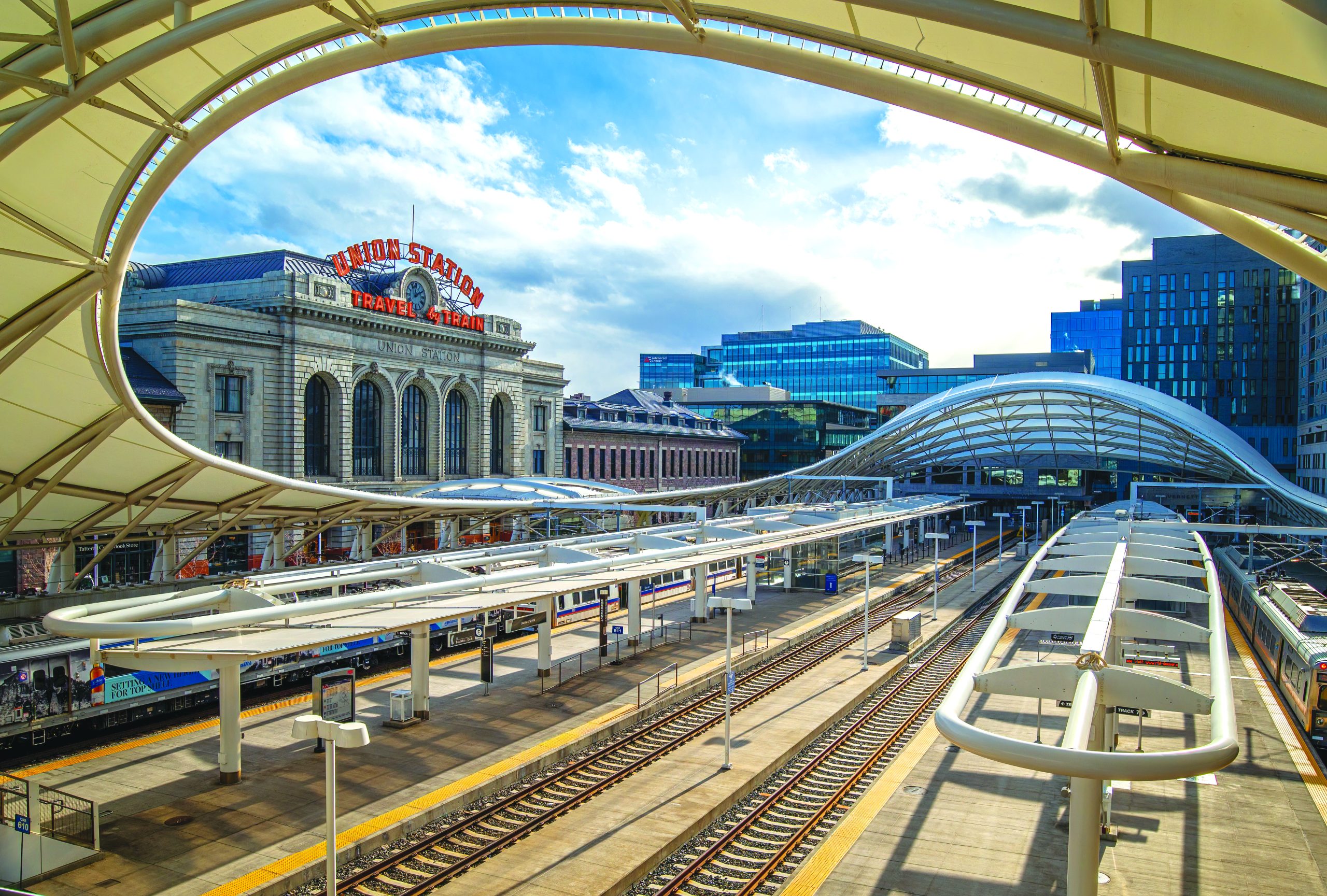
Colorado’s Front Range is positioned as the only feasible north-south corridor between the coasts where Amtrak’s three major long-distance routes (Southwest Chief, California Zephyr and Empire Builder) can be directly linked. The Denver metro could become the nexus of a national passenger rail network, with significant economic, political and social benefits for all Coloradans.
We should not underestimate the significance of Colorado’s opportunity to become a hub in a future North American passenger rail network. Gov. Polis is right to highlight this as an urgent public policy initiative.
The revival of interest in intercity passenger rail service, amplified by $8 billion in federal cash, represents an opportunity for states and cities that are prepared to advance worthy corridors and projects. Unfortunately, Colorado has fallen behind the peloton in this race. Much of the money available to the U.S. Department of Transportation (USDOT) by Congress has been claimed by corridors that were already in the pipeline and were supported by multi-city, multi-state intergovernmental agreements, service plans and design concepts.
Colorado has for three decades been mired in the “study phase” of passenger rail development. This has enabled Colorado’s Department of Transportation (CDOT) and the state’s elected officials to continue pouring money into endless expansion of highways, freeways and airports. The time has come to move beyond studies.
Here are some suggested principles to guide the effort:
Intercity network
The U.S. will develop a passenger rail network linking its major cities — our version of the Paris to Madrid to Barcelona, Berlin to Hanover to Amsterdam, or Tokyo to Fukushima to Sendai corridors. This was the original idea behind our Interstate Highway System: Once a trunk is built, the branches will follow. Amtrak’s Northeast Corridor (Washington, D.C. to New York to Boston) continues to spawn connecting passenger rail lines in the Northeastern and Mid-Atlantic states. That’s not only a workable plan, it’s an exciting vision.
And our big idea is a train to Craig? Colorado’s vision is too small, too parochial.
Even the line CDOT has proposed from Pueblo to Fort Collins through Denver, Boulder, Longmont and Loveland is a misfire. We should be talking about Denver as a major passenger rail hub with spokes to Houston/Dallas, Albuquerque/Santa Fe, Cheyenne/Billings and Omaha/Chicago, with connections to Phoenix/Tucson, Southern California and Spokane/Seattle. Commuter rail links to smaller cities can come later, but that’s not where we should start.
Train to Boulder
Gov. Polis envisions the Front Range rail as the way to correct RTD’s failure to build a train from Denver to Boulder. There is no question Boulder and Longmont have a legitimate beef with RTD. And it would be great to board a train at Union Station and go to Boulder. But the national passenger rail initiative is not the way to make that happen.
The projects moving forward in USDOT’s revitalized passenger rail program are the result of coordinated, multi-state efforts that have been in the works for years. An example is the collaboration between Illinois, Wisconsin and Minnesota on a line connecting Chicago to Minneapolis. (In an interesting parallel, Madison, the “Boulder of Wisconsin,” has complained that it’s not on the proposed line. Amtrak has responded politely by adding a dotted-line, side connection to Madison.)
The political reality is there is no faster way to kill a passenger rail program in Colorado than to have it be seen by voters as an attempt to pay for a train to Boulder.
To the mountains
Many Coloradans (and visitors) would love to ride trains into our mountains for a ski weekend or a summer vacation. Some have had the experience of riding trains in Austria or Switzerland, with gorgeous views and great on-board service, arriving in quaint mountain villages where cars are not allowed. But the costs of building mountain rail lines in Colorado are off the scale of feasibility, at least in the near term.
Whether or not rail service to the Colorado mountains will ever happen is an interesting topic to debate. But that is not where we start and clearly is not a national priority.
Avoiding pitfalls
Another reality we should embrace is that U.S. states and cities have been lousy at building modern rail projects. Over budget and behind schedule with ridership below forecast has been the norm, not the exception. Two egregious examples are Honolulu Rail (100% over budget, a decade late) and California High Speed Rail (200% over budget, over a decade late… so far).
Passenger rail lines are high-risk mega-projects that require sophisticated planning, design and project management. We can learn from our peers in Europe, especially the major infrastructure entities (Eurostar, SNCF, Deutsch Bahn, Trenitalia, Renfe, etc.). And there are lessons to learn from Brightline, which has delivered a major intercity rail corridor in Florida on a tight schedule and budget.
But we cannot go to the voters in Colorado without direct and realistic answers to questions about how we intend to avoid the pitfalls that the public now associates with major rail projects.
Bottom line
Developing a passenger rail program will be a complex endeavor that will help us meet economic and climate goals. To succeed, Colorado will need to be clear-headed and surefooted. We need a compelling, long-term vision. We need strategic partners. We need to anticipate and dodge the pitfalls.
The risks are big, but the potential benefits are enormous.
Jim Charlier has been a transportation planner for over five decades. He held senior management positions at two state DOTs and has provided consulting services to many of Colorado’s cities and towns. He has worked on rail and rail-related projects in Orlando, Phoenix, Honolulu, Redmond, Portland, Santa Fe and Houston. Jim lives in Denver.
